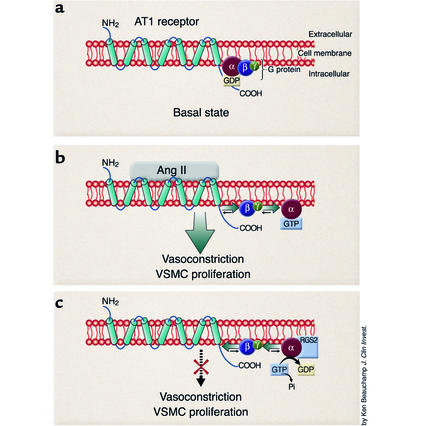Figure 1.
Regulation of G protein signaling by RGS2. (a) During basal state the AT1 receptor spans the cell membrane and is associated with a heterotrimeric G protein. (b) Binding of hormone (angiotensin II) activates the G protein–coupled AT1 receptor, causing a conformational change and exchange of GDP for GTP on Gαq. The Gαq-GTP and Gβγ subunits dissociate and are free to activate downstream effector proteins, which eventually results in physiological actions such as vasoconstriction and vascular smooth muscle cell (VSMC) hypertrophy. Ang II, angiotensin II. (c) In the presence of RGS proteins, such as RGS2, the Gαq-catalyzed hydrolysis of GTP to GDP is accelerated, terminating the Gα-effector interactions. The Gα-GDP complex has high affinity for the Gβγ subunit, and reassociation of the Gαβγ-GDP unit with the receptor returns the system to the basal state (a).

